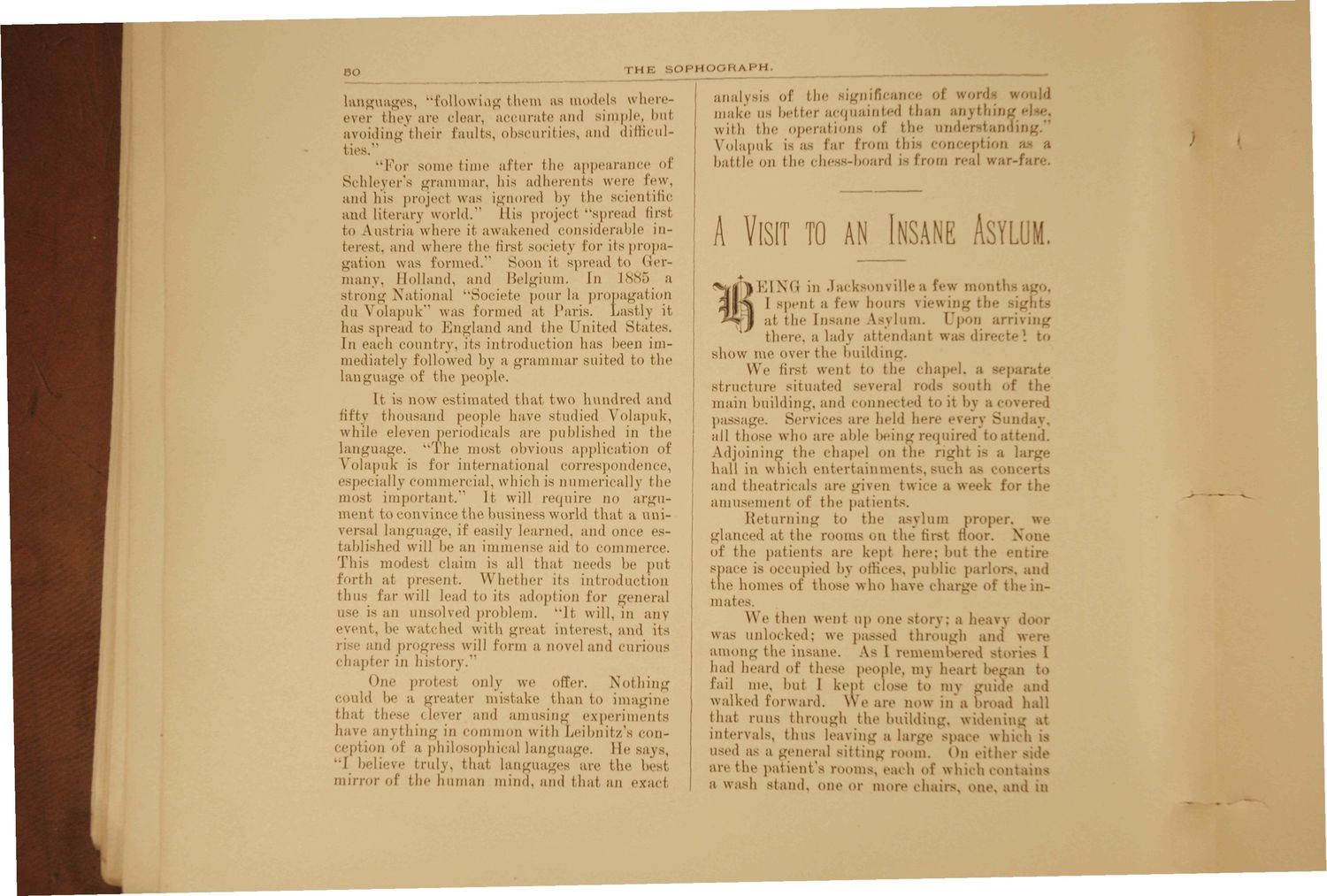Caption: Sophograph - 1891
This is a reduced-resolution page image for fast online browsing.

EXTRACTED TEXT FROM PAGE:
eo 1 * 1 THE 1 HOOK A PH. _ ^ _ - _ _ _ _ _ _ _ _ _ _ languages, "following them as modela whereever t h e y are clear, accurate and simple, b u t avoiding their faults, obscurities, and difficul1 ties; " F o r some time after the appearance of analysis of the significance of • Id make us better acquainted than anything el* wiili the operations of the und< nding Volapuk is as far from tbi conception ;• a battle on the chess-board ia from real r-far Schleyer's grammar, his adherents were few, and his project was ignored by the scientific and literary world." His project "spread first to Austria where it awakened considerable interest, and where the first society for its propagation was formed." Soon It spread to Germany, Holland, and Belgium. In 1885 a strong National "Societe pour la propagation dii Volapuk" was formed at Paris. Lastly it has spread to England and the United States. In each country, its introduction lias been immediately followed by a grammar suited to the language of the people. It is now estimated that two hundred and fifty thousand people have studied Volapuk, while eleven periodicals are published in the language. "The most obvious application of \ olapuk is for international correspondence, especially commercial, which is numerically the most important." It will require no argument to convince the business world that a universal language, if easily learned, and once established will be an immense aid to commerce. This modest claim is all that needs be put forth at present. Whether its introduction thus far will lead to its adoption for general % use is an unsolved problem. '\i will, in any event, be watched with great interest, and its rise and progress will form a novel and curious c h a p t e r in h i s t o r y . " A VISIT TO AN INSANE ASYLUM. ^MII ^I^INQ in Jacksonville a few month I spent a few bon viewing the sign! at the [nsane Asylum. Upon arrivin there, a lad\ attendant was din show me over the building. We first went to the chapel, a separat structure situated several rod* south of tb main building, and connected to it by a covered passage. Services are held here every Sunday all those who are able being required t ittend. Adjoining the chapel on the right is a large hall in which entertainments,such as con rts and theatricals are given twice a v. k for th amusement of the patients. Returning to the asylum proper, \\ glanced at the rooms on the first floor. None in of t h e p a t i e n t s are kept h e r e : but t h e e n t i r e space is occupied by offices, public parlor-, and t h e h o m e - 01 those w h o have chargi t h e inmates. \ \ e then went up one s t o r y : a heav\ r One protesi only we offer. Nothing could be a greater mistake than to imagine that these < lever and amusing experiments have anything in common with Leibnitz's conception of a philosophical language, tie says, "I believe truly, that languages are the best mirror of the human mind, and thai an exact was unlocked; we passed through and wen among the insane. As I remembered stories 1 had heard of these people, mj heart began t fail me, but I kept close to my guide and walked forward. W e are now in a broad hall that runs through the building, widening .t intervals, thus leaving a large space which is used as a general sitting room. On eith< are the patient's rooms, each of which con! us a wash s t a n d , one or 1)1011 b a n - , one. and ID
|